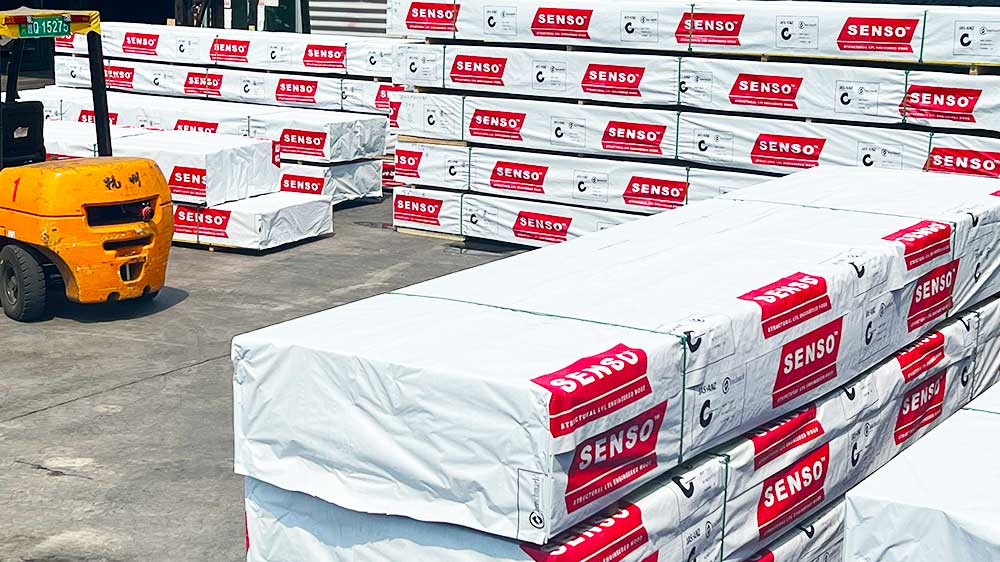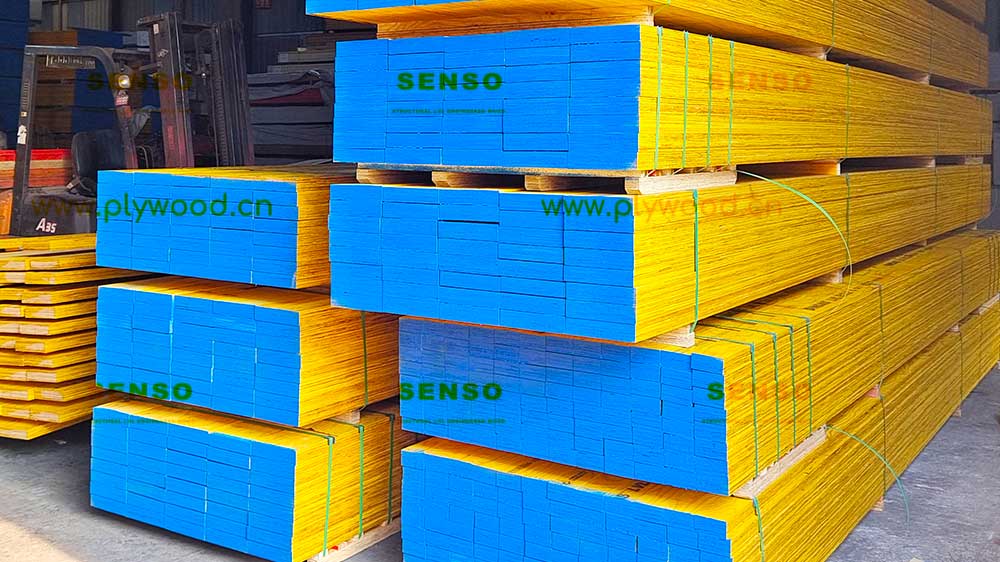What is Laminated Beam?
Laminated beams mark an advancement in construction. This category includes LVL beams and glue laminated beams. They are made by bonding wood layers with durable adhesives. These beams offer superior strength and stability. They also resist environmental factors better than solid wood. The production of laminated beams enhances wood’s structural integrity. It supports sustainable building practices. This process uses less desirable wood pieces. It reduces waste. It also promotes efficient resource use.
The Evolution of Laminated Beam in Construction
Advancements in Laminated Beam Technology
The development of laminated beams, such as LVL (Laminated Veneer Lumber) and glue laminated timber, has been pivotal in the construction industry. These materials are engineered for superior performance, offering remarkable strength, durability, and versatility. Innovations in adhesive technology and manufacturing processes have further enhanced the quality and applications of these beams.
The Environmental Impact
A significant advantage of laminated beams lies in their environmental benefits. By utilizing wood from sustainably managed forests and employing production processes that minimize waste, the manufacturing of laminated beams contributes to more eco-friendly construction practices. Moreover, the energy efficiency of buildings is improved through the use of these materials, thanks to their excellent thermal properties.
Laminated Beam Architectural Flexibility and Aesthetics
Laminated beams are not just about strength and sustainability; they also offer unmatched architectural flexibility. Their ability to be molded into various shapes and sizes allows architects to push the boundaries of design, creating structures that were once deemed impossible. Additionally, the natural beauty of wood brings warmth and aesthetic appeal to any project, making laminated beams a popular choice for both commercial and residential buildings.
SENSO Laminated Beam Cost-Effectiveness and Efficiency
Incorporating laminated beams into construction projects can lead to significant cost savings and efficiency gains. Their standardized production and ease of installation reduce labor costs and construction time. Furthermore, the long-term durability and low maintenance requirements of laminated beams ensure savings over the lifespan of a building.
Laminated Beam Transforming the Future of Construction
The use of laminated beams, including LVL lumber and glue laminated beams, is reshaping the future of construction. These materials offer a sustainable, efficient, and aesthetically pleasing solution to modern building challenges. As technology continues to advance, the potential for laminated beams in construction is boundless, promising even greater innovations and applications in the years to come.
Overcoming Manufacturing Challenges
The production of laminated beams, such as LVL beams and glue laminated timber, involves complex processes that require precise control over materials and conditions. One of the primary challenges lies in ensuring the quality and consistency of the wood veneers and adhesives used. Manufacturers have developed rigorous quality control measures and innovative techniques to address these issues, resulting in highly reliable and uniform products.
Enhancing Performance through Research
Ongoing research and development efforts are crucial for advancing laminated beam technology. Scientists and engineers are continually exploring new materials, adhesives, and treatments to enhance the performance, durability, and environmental profile of laminated beams. These innovations are key to meeting the evolving needs of the construction industry and overcoming obstacles such as moisture resistance and load-bearing capacity.
Navigating Regulatory and Standards Compliance
The construction industry is governed by stringent regulations and standards to ensure the safety and reliability of building materials. Laminated beam manufacturers must navigate a complex landscape of national and international codes, conducting extensive testing and certification processes to comply. By staying ahead of regulatory changes and working closely with certifying bodies, companies ensure their products meet the highest safety and performance criteria.

Expanding Applications of Laminated Beam
Revolutionizing Residential Construction
Laminated beams have become a game-changer in residential construction, offering homeowners and builders a versatile and sustainable material choice. From supporting large, open living spaces to creating unique architectural features, LVL beams and glue laminated beams provide the strength and aesthetic appeal desired in modern homes. Their use in residential projects not only enhances design possibilities but also contributes to energy-efficient and durable homes.
Pioneering Commercial and Public Projects
In commercial and public construction, laminated beams enable the realization of ambitious projects, such as expansive office spaces, schools, and recreational facilities. The material’s load-bearing capabilities and flexibility facilitate the creation of large, uninterrupted spaces and innovative designs that meet the functional and aesthetic requirements of these projects. Additionally, the environmental benefits of laminated beams align with the growing demand for green building practices in commercial construction.
Infrastructure and Specialized Applications
Beyond buildings, laminated beams are finding applications in infrastructure projects and specialized constructions, such as bridges, sports facilities, and exhibition centers. Their strength, durability, and resistance to environmental factors make them an excellent choice for structures exposed to challenging conditions. The adaptability of laminated beams to various shapes and sizes also enables the creation of unique and visually striking designs that enhance public spaces and communities.
The Role of Sustainability in Laminated Beam Usage
Sustainability is at the core of the laminated beam industry, driving innovations and practices that reduce environmental impact. From sourcing wood from certified forests to optimizing manufacturing processes for minimal waste, the sector is committed to eco-friendly practices. The recyclability and biodegradability of laminated beams further underscore their role in promoting sustainable construction, contributing to a circular economy in the building industry.
Advancements in Digital Design and Fabrication
The integration of digital technologies in the design and fabrication of laminated beams is transforming construction practices. CAD and CAM systems are pivotal in construction. They enable precise planning and cutting of laminated beams. Complex shapes and structures can be created with high accuracy. This digital approach enhances design flexibility. It also optimizes material usage. Additionally, it reduces waste. These contributions support more sustainable construction methodologies.
The Role of Building Information Modeling (BIM)
Building Information Modeling (BIM) plays a pivotal role in the construction process of projects involving laminated beams. BIM facilitates the visualization, simulation, and management of all aspects of a construction project, ensuring that the use of LVL beams and glue laminated beams is optimized for structural integrity, efficiency, and sustainability. Through BIM, stakeholders can anticipate and resolve potential issues in the design phase, streamlining the construction process and improving collaboration among architects, engineers, and contractors.
Future Directions in Laminated Beam Technology
Exploring New Materials and Composites
The future of laminated beam technology lies in the exploration of new materials and composites. Researchers are investigating the use of alternative fibers and resins to enhance the environmental profile and performance of laminated beams. These innovations could lead to lighter, stronger, and more resilient building materials, opening new possibilities for construction and architectural design.
Addressing Climate Change and Sustainability Challenges
The construction industry aims to lessen its environmental impact. Laminated beams are crucial for this goal. They help tackle climate change and sustainability challenges. Sustainable forestry continues to advance. Recycling and material science are improving. These advancements ensure laminated beams make buildings more energy-efficient. They also help reduce carbon footprints. The industry is committed to innovation and sustainability. This commitment makes laminated beams key to greener construction practices.
Expanding Global Markets and Applications
The demand for LVL beam is growing globally, driven by the need for sustainable, efficient, and versatile construction materials. As markets in developing countries expand and the benefits of laminated beams become more widely recognized, their applications are set to diversify further. From disaster-resistant housing to modular construction, laminated beams will continue to address a broad range of construction needs around the world.
Reflecting on laminated beams shows a changing construction industry. This industry prioritizes sustainability, efficiency, and innovation. Laminated beam technology continues to evolve. It promises to improve the built environment. Structures will be aesthetically pleasing. They will also be environmentally responsible. And they will be resilient.
Frequently Asked Questions
What is the difference between LVL and laminated beam?
LVL stands for Laminated Veneer Lumber. It is a type of laminated beam. These beams are made by bonding thin wood veneers. The bonding process uses heat and pressure. Laminated beams include various engineered wood products. This category features LVL and glue laminated timber (glulam). Each type has specific properties. They also have different uses.
Are laminated beams stronger than solid wood?
Yes, laminated beams are generally stronger and more durable than solid wood because they are engineered to distribute loads evenly and resist warping, splitting, and shrinking. This makes them ideal for applications requiring high strength and stability.
Is LVL stronger than wood?
LVL stands out from conventional lumber. It is designed for superior strength. The manufacturing process enhances its qualities. It boasts a high strength-to-weight ratio. This makes it excellent for load-bearing. Its dimensional stability is also superior.
Why use laminated beams?
Laminated beams are used for their strength, versatility, environmental benefits, and aesthetic appeal. They allow for larger spans, reduce the need for supporting columns, and can be shaped into curves and other complex forms, enabling innovative architectural designs.
What is the disadvantage of LVL beam?
One potential disadvantage of LVL is its cost compared to conventional lumber, primarily due to the manufacturing process. Additionally, like other wood products, it requires protection from moisture to maintain its structural integrity over time.
As we embrace the possibilities presented by laminated beam technology, it’s clear that the future of construction is bright, sustainable, and boundlessly innovative.
Post time: Feb-24-2024



